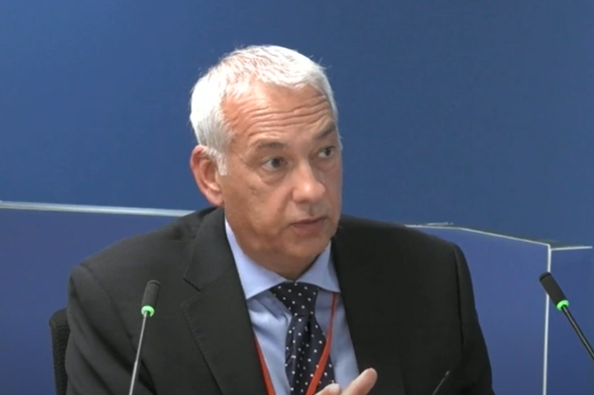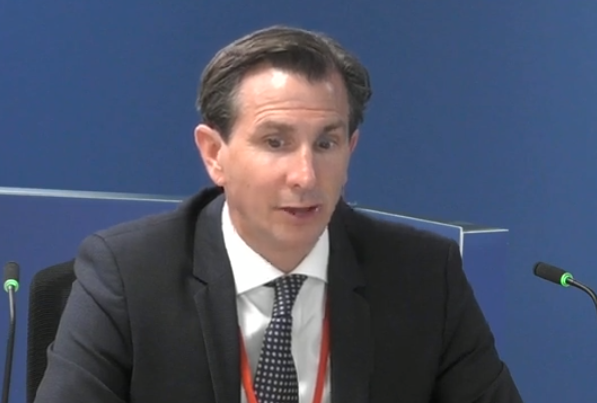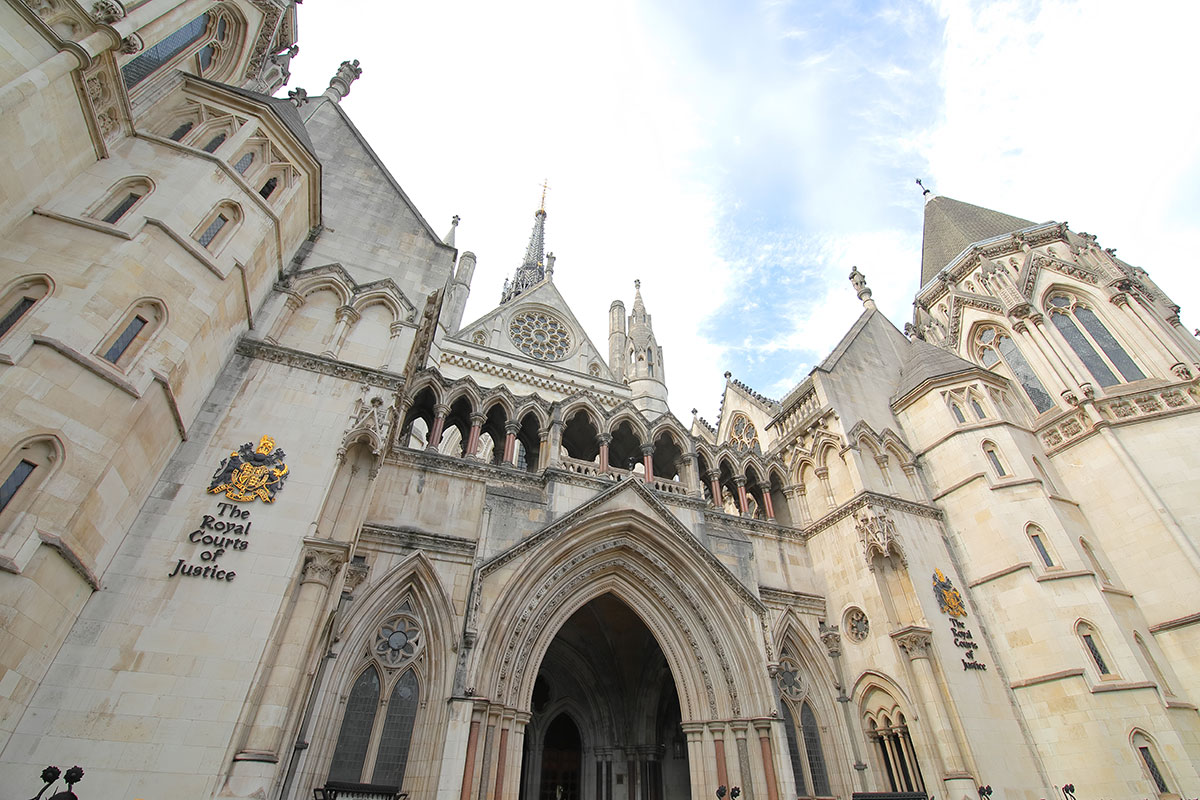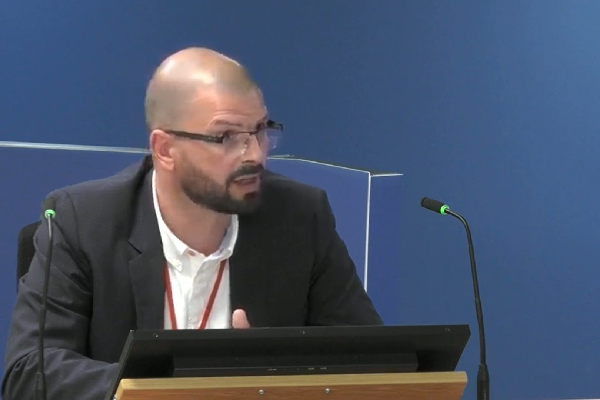You are viewing 1 of your 1 free articles
Grenfell Tower gas work left holes that might have helped smoke spread through building, inquiry hears
Work to replace a gas pipe within Grenfell Tower in the months before the fire resulted in large holes that could have helped smoke spread into the stairwell amid “weak” design processes which failed to properly assess the impact of the work on fire safety, the inquiry into the fire heard today.
Matthew Dolan, contract director at contractor tRIIO at the time of fire, said the company had many areas of its work that it could have improved and confirmed it had failed to consult fire safety experts on the impact their work might have on compromising fire compartmentation in the block.
tRIIO was a joint venture between contractors Skanska and Morrisons Utility. It was set up in 2013 for a contract with National Grid Gas Distribution, now Cadent Gas, to replace gas mains in London and the east of England. The contract ended this year.
At Grenfell Tower, the company had been tasked with replacing one of the tower’s three main gas supplies, which supplied gas to dozens of flats in in the building, in 2016 after the completion of the wider refurbishment of the building.
This work was commissioned after a leak had been discovered in one part of the line, named “residential supply two”, and had resulted in that line being isolated and gas being cut off to the flats it supplied. This work had not been fully finished on the night of the fire.
The inquiry heard today how tRIIO missed a number of opportunities in the design and construction process to address what impact its work might have on fire compartmentation – the design of a building to ensure it holds fire and smoke within a single area of the block.
The inquiry’s gas safety expert Rodney Hancox has said that the over-sized holes created during tRIIO’s work were significant factors in allowing smoke to spread between the lobbies and the stairwell.
When asked by counsel Kate Grange QC if he agreed that tRIIO’s design process lacked “thoroughness”, Mr Dolan said yes, adding that there were definitely aspects of the work that could have been improved.
When asked if there had been consideration of what impact the holes within the building’s walls would have on compartmentation, Mr Dolan explained that these were recognised but said the company’s priority was to get the gas back on.
He said: “The primary objective of the project was to try and get the gas back on, so we left holes within the fire compartmentation and therefore that presented a risk, we were aware of it, but the programme was that we were wanting to get the gas back on and then follow up with the boxing in.”
When probed by Ms Grange whether the company had asked itself what would happen if there was a fire in the building before the work was completed, Mr Dolan said: “I personally did not, I can’t answer for the guys working on the project, they would have clearly known what they were doing.
“We carried on with the job in terms of the programme which was the sequencing of the project, which was install the gas system, test it, commission it and then follow up with the boxing-in.”
tRIIO had initially designed the new system with a particular type of joints. However, when the work was carried out, one of its sub-contractors had installed a different type of joint, making the pipeline non-compliant with gas safety rules and forcing a redesign.
While quicker to install, these new joints, named flange joints, were considered more susceptible to leaking and as a result require more ventilation around them. This required wider over-sized holes to run the pipes through the block’s stairwell and into the lobbies.
The use of the flange joints also meant that tRIIO had to alter its design, with the new design requiring more extensive boxing-in.
Boxing-in requires a fire retardant board to be built around the pipeline to protect it in the case of a gas leak. In the case of Grenfell, it also helped with increasing ventilation around the pipes.
However, as a result of this design change, this boxing-in work had not been fully completed on the night of the fire, meaning that in some cases fire compartmentation had been breached. The inquiry presented three pictures in which there had been smoke staining underneath boxing-in work, highlighting how the incomplete system resulted in compartmentation breaches.
The inquiry also saw evidence that Cadent had in fact raised questions about the incomplete work.
An email from Cadent’s Mary Ryan asked: “The agreement was to install the new supply in the fire exit and box it in to meet their [London Fire Brigade’s] evacuation requirements”.
“This has not been completed, although there are ventilation holes throughout the stairwell, which if a fire incident occurred would create a more unsafe situation.”
Following the presentation of this email, Ms Grange asked if the gas should have been reconnected before the work to box all of the pipelines in had been completed.
Mr Dolan said that it was industry practice in the case of reactive projects to prioritise reconnecting the gas before anything else.
The inquiry also heard today that tRIIO had overestimated how much fire resistance the material used to box in the new pipeline had. The company had told the client it had two hours of fire protection, when in fact it was found only to have 88 minutes.
Despite the reduced fire protection, Ms Grange stated that the new steel riser pipe was intact after the fire and there was no failure to contain gas in the pipeline.
The inquiry has previously heard that residents complained about the safety of the gas works repeatedly, with a letter from the Grenfell Tower Leaseholders’ Association in March 2017 saying they believed the work had “put our lives in danger and we don’t feel secure in the building anymore”.
The inquiry continues.












